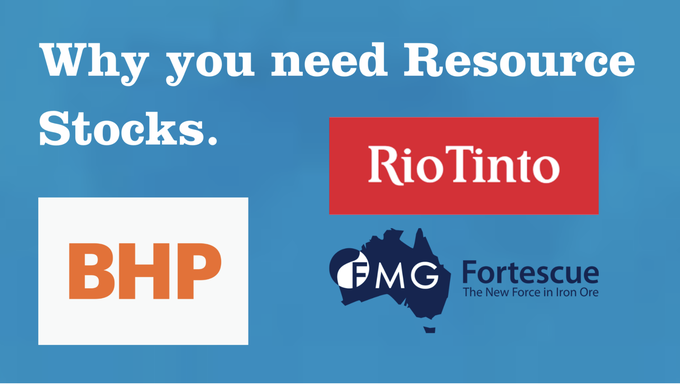Why you need to own big ASX resource stocks

The building block for industrialisation is tumbling, its price has declined 43% in the past three months. Although China’s steel production is under pressure due to carbon reduction measures, we look at why the demand for iron ore puts a floor under current prices.
If you are interested in learning more about Blue Chip Stocks and how to invest in this area, read more here.
Why the Iron Ore Price is under Pressure: High CO2 Emissions from Steel Production
Steel production accounts for about 9% of worldwide carbon dioxide emissions and is hard to abate. China’s contribution is estimated at as much as a fifth.
Implications for China's Steel Output
China is the highest carbon-emitting country and is hosting the 2022 Winter Olympics next February in Beijing. It will want the world to see a clean living space. Added to this, late last year it indicated that by 2030 it plans to cut emissions per unit GDP by over 65% from the 2005 level.
Ramping up its total installed capacity of wind and solar power to over 1.3bn kW will only go so far. It is not hard to see that growth in output from the world’s largest steel producer has to slow or be halted. Global crude steel production in 2020 was 1,864m tonnes, 56% of which was produced in China. China's steel production in 2021 for the 8 months to the end of August was 735m tonnes, up 6% and equivalent to an annual rate of around 1,102m tonnes. If China is serious about limiting its steel production to the 2020 level, it really has to put the brakes on production. This would mean slowing steel production for the balance of the year to an annual rate of around 950m tonnes.
Iron ore price over three years
 Iron ore is under pressure, but it’s clear that the high demand for it in steelmaking has contributed to its long-term price rise, which we forecast to continue. We believe that the price will remain high, but it’s unlikely recent peaks be revisited any time soon. Producers like RIO, BHP, and FMG are making very good profits at existing levels and all have carbon reduction initiatives.
Iron ore is under pressure, but it’s clear that the high demand for it in steelmaking has contributed to its long-term price rise, which we forecast to continue. We believe that the price will remain high, but it’s unlikely recent peaks be revisited any time soon. Producers like RIO, BHP, and FMG are making very good profits at existing levels and all have carbon reduction initiatives.
Iron Ore is a Casualty
The casualty in this has been a rapid collapse in iron prices commencing in late July this year from a price of around US$220/tonne (basis CFR China, 62% fines) to US$120 in mid-September. With threats to iron ore demand from steel production curbs, there is a strong logic in Fortescue Metals (FMG) to pursue green technologies that produce green steel to protect its market.
Where to from Here?
Although China iron ore demand has slowed, it has not collapsed. The major producers have been working hard to maintain production from their high volume operations. Brazilian group Vale recently lowered its 2022 capacity target from 400 to 370m tonnes and this may still be optimistic. The iron ore balance may still be tight, but not as tight. Technically, the iron ore price looks oversold after such a rapid fall. We had previously envisioned that US$120/tonne would be a floor within a US$120-165/tonne trading range based on historic resistance levels. Iron ore could still recover from here and achieve an average price for FY22 (June year) similar to the US$135/tonne level achieved by Fortescue in FY21.
Are you ready to invest in Blue Chip Stocks now?
Get access to our best stocks to buy now. 14 days free. No credit card required just enter your email and you're away.
Coup d'État in Guinea
President Alpha Condé of Guinea was ousted in a coup on 5 September. The West African country is now under the control of military rulers who have begun consultations with political, religious, and business leaders.
Guinea hosts the undeveloped Simandou iron ore deposits, globally significant both in terms of size and grade. It also hosts globally significant bauxite deposits, which are exported to produce alumina for aluminium production. While the immediate reaction to the coup may have been negative, the Condé regime was known to have elements of corruption.
Where Does Simandou fit in?
Currently, 70% of China’s iron ore imports are from Australia and Brazil. China’s Ministry of Industry and Information Technology has a target for sourcing around 45% of its iron ore imports from mines controlled by China by 2025. Its focus has been on the Simandou deposit and projects in the Republic of Congo. While Simandou is a single deposit, it is controlled by two ownership structures. The better-known south east part, blocks 3 and 4, is 45.05% owned by Rio Tinto (RIO), as well as by Chinese state-owned Chinalco (39.95%) and the Government of Guinea (10%). The two northern SMB Winning blocks are owned by Chinese-backed interests Shandong Weigiano and Yantai Port Group (combined 90%) and the Government of Guinea (10%).
Fast Tracking of Simandou Northern Blocks?
While China’s target for 45% controlled sourcing of iron ore by 2025 seems stretched, the northern blocks could potentially be fast-tracked, a 3-5 year threat to Australian exports. CONCLUSION FOR IRON ORE PRODUCERS; If iron ore continues to trade in the US$120-165 per tonne range as we anticipate high dividends from BHP Group (BHP), Fortescue Metals (FMG) ,and Rio Tinto (RIO) should continue to be maintained. They might not be the same as last year, but this still represents strong cash in the hand for investors. On valuation grounds we prefer FMG, then BHP, then RIO. We also like the fact that BHP is more diversified than the other two.






